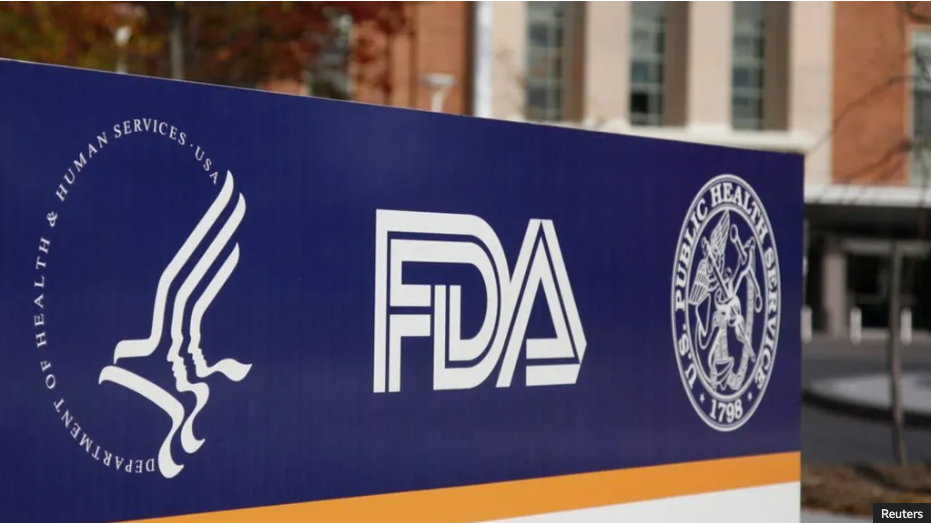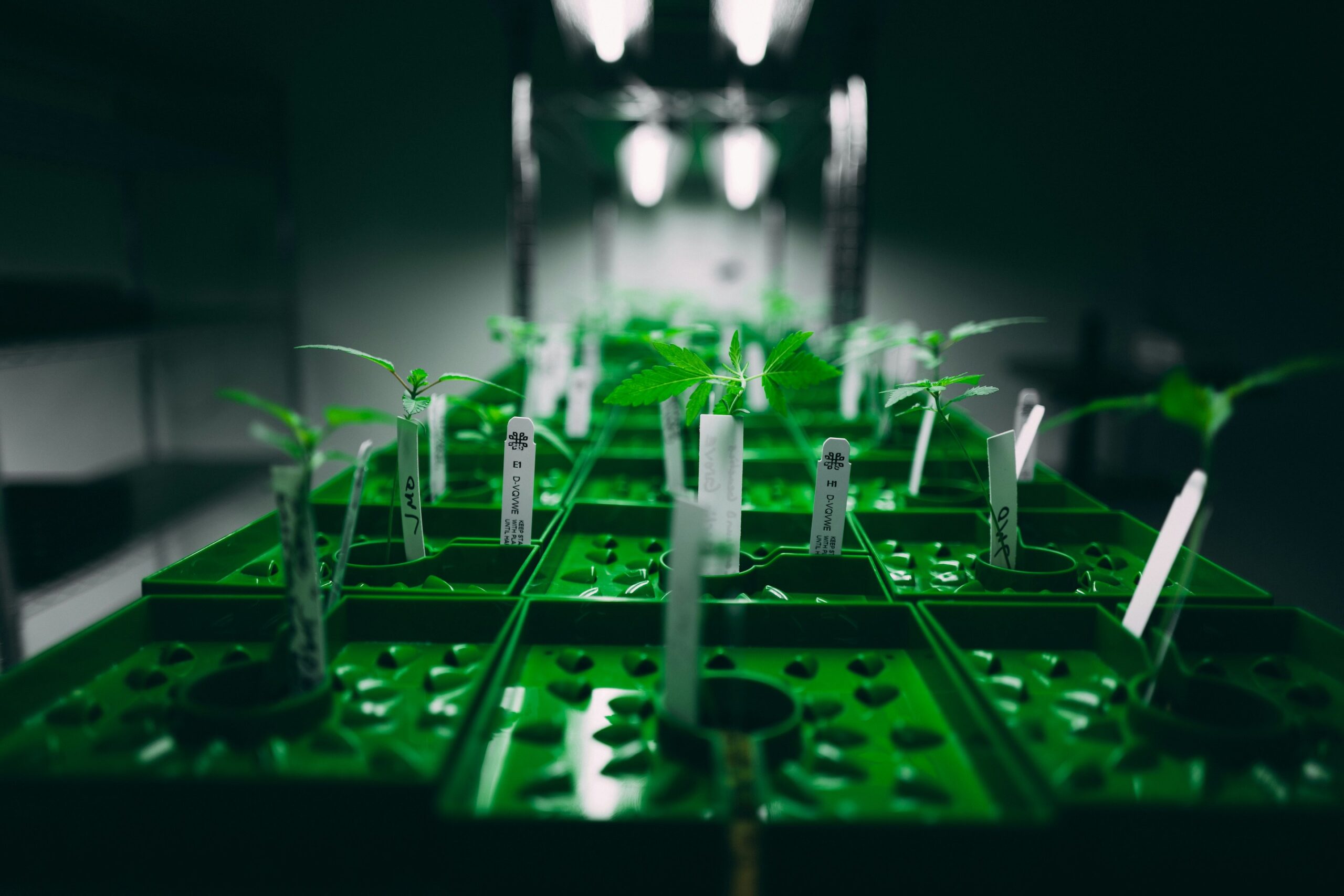May 20th – May 27th, 2022
Medical Cannabis Inhalers to Reduce Pain?
Following medical cannabis inhalation, pain and opioid use were reduced while overall quality of life (QoL) was improved, a new study suggests.
Medical cannabis has long been viewed as an alternative agent to treat pain for a wide array of medical conditions and as such is on the rise worldwide. [1] However, the combination of titration regimens (i.e., slow, and steady addition of a substance to accurately determine the amount which confers an effective result) and the different method of cannabis consumption make it difficult to obtain a stable and safe treatment.
An Israeli company created an inhaler device called SyqeAir Inhaler 1.1, claiming to be a groundbreaking medical inhaler for standardized clinical treatment using medical cannabis to reduce pain in the fastest way possible while removing the risk of smoke exposure. [2] In the article presented, the group evaluated the pharmacokinetics, pain levels, and quality of life (QoL) outcomes of ∆9-tetrahydrocannabinol (∆9-THC) inhalation in a group of 143 patients, in which most were diagnosed with chronic neuropathic pain. [3]
They found that patients reported a significant pain reduction with 76% reporting a reduction in pain of at least 1 numeric pain scale (NPS) point while 58% of patients who reported opioid use noted a reduction in opioid doses. Additionally, 92% of patients reported an improvement in QoL measurements with very few adverse events.
The authors concluded: “Medical cannabis treatment with the Syqe Inhaler demonstrated overall long-term pain reduction, quality of life improvement, and opioid-sparing effect in a cohort of patients with chronic pain, using just a fraction of the amount of MC compared with other modes of delivery by inhalation…Additional follow-up in a larger population is warranted to corroborate our findings.”
Cannabidiol (CBD) to Treat Cannabis Use Disorder (CUD)?
An exploratory and observational study from France suggests that CBD can reduce cannabis consumption.
With 200 million users worldwide, cannabis is the most produced and consumed illicit substance in the world. Cannabis smoking can lead to health problems including cough and respiratory infections as well as increased risks of cannabis use disorder (CUD), defined as the inability to stop consuming cannabis despite showing physical and psychological harm (e.g., irritability, sleep difficulty, depressed mood…). [4]
While the most effective treatment is the cessation of cannabis, alternative strategies are being investigated. Interestingly, a potential target to treat substance use disorders is cannabidiol (CBD), the second most prevalent phytocannabinoid, associated with anti-inflammatory, analgesic, and anti-emetic properties. [5] Additionally, its relatively low safety profile makes it an attractive target for a wide range of medical conditions. [6]
Previous studies have shown that CBD consumption led to a reduction in cannabis withdrawal symptoms either in a tablet or in oil form and it also reduced the number of cigarettes smoked and signs of cannabis withdrawal. [7],[8]
A group of researchers in France aimed to determine whether CBD inhalation via an electronic cigarette can help CUD participants reduce or stop cannabis use. [9] To answer this, they performed an exploratory, observational, non-randomized study in which 20 patients received CBD oil at the beginning of the study and were assessed their daily joints consumption for 12 weeks.
With nine patients completing the 12-week follow up, they found that the mean number of joints consumed per day was 3 compared to 6.7 at baseline for all participants, with mild and no serious adverse events. Interestingly, three participants completely stopped using cannabis.
The authors concluded: “It is the first clinical study to explore the inhalation of CBD via a vaping device in a substance use disorder… This research highlights the benefits of CBD in CUD and need to continue evaluating this substance… A double-blind, randomized, multi-center, placebo-controlled clinical trial is still needed to assess the efficacy of inhaled CBD in CUD.”
Insights from ∆8-Tetrahydrocannabinol (∆8-THC) Use in a US Adult Cohort
Surveys indicated that 1 in 6 respondents were using ∆8-THC, with vaping concentrated formulations being the most common route of consumption.
∆8-tetrahydrocannabinol (∆8-THC) and ∆9-tetrahydrocannabinol (∆9-THC) can be referred to as “chemical cousins” because they have the same chemical composition, but the location of the carbon-carbon interaction (double bond) differs in each; it is located on the 8th carbon for ∆8-THC and on the 9th carbon for ∆9-THC, hence the different names. [10][11] ∆8-THC occurs naturally in very small concentrations, but it can be converted synthetically by refluxing (heating) CBD in an organic solvent leading to a high percentage of ∆8-THC as well as lower doses of ∆9-THC and ∆10-tetrahydrocannabinol (∆10-THC). [12]
Previous studies have shown that ∆8-THC is less psychotropic than ∆9-THC with similar pharmacokinetics (movement of drug to the body) and pharmacodynamics (body’s biological response to the drug) profiles. [13]
In the United States, ∆8-THC-based products have started to get commercialized in the form of flowers, edibles, creams, or tinctures due of the signature of the Agriculture Improvement Act or Farm Bill in 2018, which removed hemp and cannabis derivates with less than 0.3% of ∆9-THC from the definition of marijuana in the Controlled Substance Act (CSA). [14] Limited research and double-blind placebo-controlled studies are available to investigate ∆8-THC’s therapeutic effects and the FDA and CDC have issued warning statements regarding ingesting these products. [15]
A combined group of researchers from New York aimed to examine the sociodemographic characteristics, motivations, and consumption patterns of ∆8-THC use in US adult cannabis users. [16] They obtained survey responses from 4348 participants who reported 16.7% of ∆8-THC consumption over the last 30 days, with vaping concentrated formulations being the most common method of consumption. Additionally, primary motivations for ∆8-THC use were its legal status and perceived therapeutic benefits.
The authors concluded: “Given the limited knowledge on use of ∆8-THC, and considering emergence of reports indicating its harmful effects, there is urgent need for nationally representative data to investigate correlates of ∆8-THC use (e.g., effectiveness of state-specific restrictions on its products).
Nabilone Administration Did Not Worsen Cognitive Performance in Patients with Parkinson’s Disease (PD)
Results of a Phase II, placebo-controlled, double-blind study suggest that the synthetic ∆9-tetrahydrocannabinol (∆9-THC) nabilone is safe in selected PD patients who suffer disabling non-motor symptom (NMS).
Parkinson’s disease (PD) is one of the most common types of neurodegenerative disease, consisting of bradykinesia (slowed movement), rest tremor (or shaking, usually beginning in a limb such as hand or fingers), rigid muscles (which can be painful and limit range of motion), and impaired posture and balance as well as other non-motor features (e.g., olfactory dysfunction, cognitive impairment, or fatigue). [17] According to the Parkinson’s Foundation, approximately 60 000 Americans are diagnosed with PD each year and more than 10 million individuals worldwide are living with PD. [18]
While current pharmacological and non-pharmacological treatments offer limited relief, there is a need to investigate other alternative approaches that not only will provide improvement in patients’ symptoms and prevent its progression but also reduce these adverse effects.
Recently, the clinical potential of medical cannabis has raised awareness among patients, researchers, and clinicians. Additionally, nabilone, a synthetic ∆9-tetrahydrocannabinol (∆9-THC) analogue (i.e., mimics the structure and pharmacological activity) has been shown to improve non-motor symptom (NMS) burden via amelioration of anxiety and sleeping problems. [19],[20] However, cognitive impairments, conceptual disorganization, and distorted sensory perceptions can be found following ∆9-THC use. [21]
A group of researchers at the Medical University Innsbruck, Austria, performed a phase II, placebo-controlled, double-blind study to evaluate whether cognitive functions and NMS are affected in patients with PD following nabilone use. [22]
With a total of 24 patients (14 nabilone; 10 placebo) enrolled in the study, nabilone or placebo was given daily for four weeks. They found that a reduction in NMS burden as well as no signs of cognitive impairments following nabilone administration.
The authors concluded: “Nabilone did not significantly worsen cognitive performance and appears to be safe to use in selected PD patients who suffer from disabling NMS…However, due to the small sample size and the short observation period, the results should be interpreted with caution. Studies with a larger sample size and a longer observation period are needed to replicate our preliminary results.”
References
[1] Boehnke KF, Gangopadhyay S, Clauw DJ, Haffajee RL. Qualifying Conditions Of Medical Cannabis License Holders In The United States. Health Aff (Millwood) 2019;38(2):295-302. DOI: 10.1377/hlthaff.2018.05266
[2] https://www.syqe.com/en/, assessed on May 20th, 2022
[3] Aviram J, Atzmony D, Eisenberg E. Long-term effectiveness and safety of medical cannabis administered through the metered-dose Syqe Inhaler. Pain Rep 2022;7(3):e1011. DOI: 10.1097/PR9.0000000000001011.
[4] Connor JP, Stjepanovic D, Le Foll B, Hoch E, Budney AJ, Hall WD. Cannabis use and cannabis use disorder. Nat Rev Dis Primers 2021;7(1):16. DOI: 10.1038/s41572-021-00247-4
[5] Pisanti S, Malfitano AM, Ciaglia E, et al. Cannabidiol: State of the art and new challenges for therapeutic applications. Pharmacol Ther 2017;175:133-150. DOI: 10.1016/j.pharmthera.2017.02.041
[6] Larsen C, Shahinas J. Dosage, Efficacy and Safety of Cannabidiol Administration in Adults: A Systematic Review of Human Trials. J Clin Med Res 2020;12(3):129-141. DOI: 10.14740/jocmr4090
[7] Shannon S, Opila-Lehman J. Cannabidiol Oil for Decreasing Addictive Use of Marijuana: A Case Report. Integr Med (Encinitas) 2015;14(6):31-5.
[8] Freeman TP, Hindocha C, Baio G, et al. Cannabidiol for the treatment of cannabis use disorder: a phase 2a, double-blind, placebo-controlled, randomised, adaptive Bayesian trial. Lancet Psychiatry 2020;7(10):865-874. DOI: 10.1016/S2215-0366(20)30290-X
[9] Cleirec G, Desmier E, Lacatus C, et al. Efficiency of Inhaled Cannabidiol in Cannabis Use Disorder: The Pilot Study Cannavap. Front Psychiatry 2022;13:899221. DOI: 10.3389/fpsyt.2022.899221.
[10] Delta-8 tetrahydrocannabinol, assessed May 20th, 2022 (https://pubchem.ncbi.nlm.nih.gov/compound/delta8-Tetrahydrocannabinol).
[11] Delta-9 tetrahydrocannabinol, assessed May 20th, 2022 (https://pubchem.ncbi.nlm.nih.gov/compound/delta9-Tetrahydrocannabinol).
[12] Mechoulam R. US 7,399,872 B2, 15 July 2008. (https://patentimages.storage.googleapis.com/43/43/9f/9910319ce43eb8/US7399872.pdf).
[13] Hollister LE, Gillespie HK. Delta-8- and delta-9-tetrahydrocannabinol comparison in man by oral and intravenous administration. Clin Pharmacol Ther 1973;14(3):353-7. DOI: 10.1002/cpt1973143353.
[14] H.R.5485 – Hemp Farming Act of 2018, assessed on May 20th 2022. (https://www.congress.gov/bill/115th-congress/house-bill/5485).
[15] https://www.fda.gov/news-events/press-announcements/fda-issues-warning-letters-companies-illegally-selling-cbd-and-delta-8-thc-products, assessed on May 20th 2022.
[16] Livne O, Budney A, Borodovsky J, et al. Delta-8 THC use in US adults: Sociodemographic characteristics and correlates. Addict Behav 2022;133:107374. DOI: 10.1016/j.addbeh.2022.107374.
[17] Kalia LV, Lang AE. Parkinson’s disease. Lancet 2015;386(9996):896-912. DOI: 10.1016/S0140-6736(14)61393-3.
[18] https://www.parkinson.org/Understanding-Parkinsons/Statistics, assessed May 20th 2022
[19] https://www.accessdata.fda.gov/drugsatfda_docs/label/2006/018677s011lbl.pdf, assessed on May 20th 2022
[20] Peball M, Krismer F, Knaus HG, et al. Non-Motor Symptoms in Parkinson’s Disease are Reduced by Nabilone. Ann Neurol 2020;88(4):712-722. DOI: 10.1002/ana.25864.
[21] Murray RM, Englund A, Abi-Dargham A, et al. Cannabis-associated psychosis: Neural substrate and clinical impact. Neuropharmacology 2017;124:89-104. DOI: 10.1016/j.neuropharm.2017.06.018.
[22] Ellmerer P, Peball M, Carbone F, et al. Eye Tracking in Patients with Parkinson’s Disease Treated with Nabilone-Results of a Phase II, Placebo-Controlled, Double-Blind, Parallel-Group Pilot Study. Brain Sci 2022;12(5). DOI: 10.3390/brainsci12050661.






